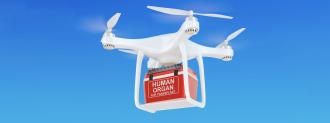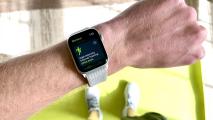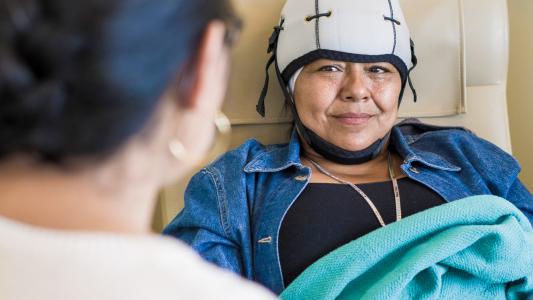In just six minutes, an uncrewed drone carried a pair of lungs from Toronto Western Hospital to Toronto General Hospital. This was the first time lungs were transported by drone delivery anywhere in the world.
The recipient was 63-year-old Alain Hodak.
What happened: The drone delivered the lungs on September 25th, when it landed on the roof of Toronto General Hospital at 1:00 a.m. local time, reports the CBC, where Hodak waited patiently for the delivery.
“We’ve used planes and helicopters and cars and vans, and oftentimes there’s a challenge in logistics. But it seems not right to use a whole Learjet to transport something that weighs only two kilograms,” said Dr. Shaf Keshavjee, the Toronto Lung Transplant Program director at UHN.
“It seems not right to use a whole Learjet to transport something that weighs only two kilograms.”
Dr. Shaf Keshavjee
So, Keshavjee asked Hodak, who was diagnosed with pulmonary fibrosis in 2019, if he wanted to participate in this first-in-the-world drone delivery due to a collaboration between UHN and Unither Bioelectronique, reports the CBC. Hodak readily agreed.
As an engineer and drone enthusiast, Hodak was excited to have his new lungs delivered by an uncrewed drone. The drone was equipped with a ballistic parachute so that if an engine failed, the parachute could be remotely deployed and the organ saved.
Why it matters: Once an organ is removed from the human body, it is a race against time. Doctors only have a few hours to transplant it into a new body. If time runs out, the organ could be discarded. The average wait time for an organ transplant is three to five years, so it is critical that transporting the organ goes without a hitch.
Once an organ is ready for transplant, hospitals have to piece together a series of car transports and flights to get the organ to the destination. Every hour spent transporting the organ increases the chances of transplant complications. A traffic jam or delayed flight could mean the difference between life and death. With a drone, the biggest challenges of that logistical nightmare could disappear.
“Having no air,” Hodak told CBC News, “I was on oxygen in industrial quantities of 25 litres a minute of oxygen, which is pretty much as much as you could put in. And now I’m able to breathe, and I’m almost sometimes surprised about breathing.”
A new wave of drone delivery: More hospitals are looking to drones for organ delivery. In 2019, researchers at the University of Maryland transported a kidney via drone. And, last year, drone delivery company MissionGO transported an organ 10.3 miles, setting a record for distance.
But organ delivery via drone isn’t widespread — yet. The next stage, according to Keshavjee, is to test the system with larger drones that have greater ranges and can go further distances. As they slowly extend the distances per delivery, regulations should be put into place to address any problems that arise. Currently, drones are restricted from flying in certain areas and heights. If the established restrictions limit organ delivery then new regulations will need to be drafted.
Eventually, Keshavjee thinks, drone-delivered organs will “become routine” once regulations are in place.
“We could send a drone to Calgary to pick up a lung and send it back. If we have the networks to retrieve organs and preserve them properly, I see the future being transporting organs to an organ repair centre first so that … organs are optimised and prepared and then flown again to the recipient hospital,” he said.
We’d love to hear from you! If you have a comment about this article or if you have a tip for a future Freethink story, please email us at [email protected].






